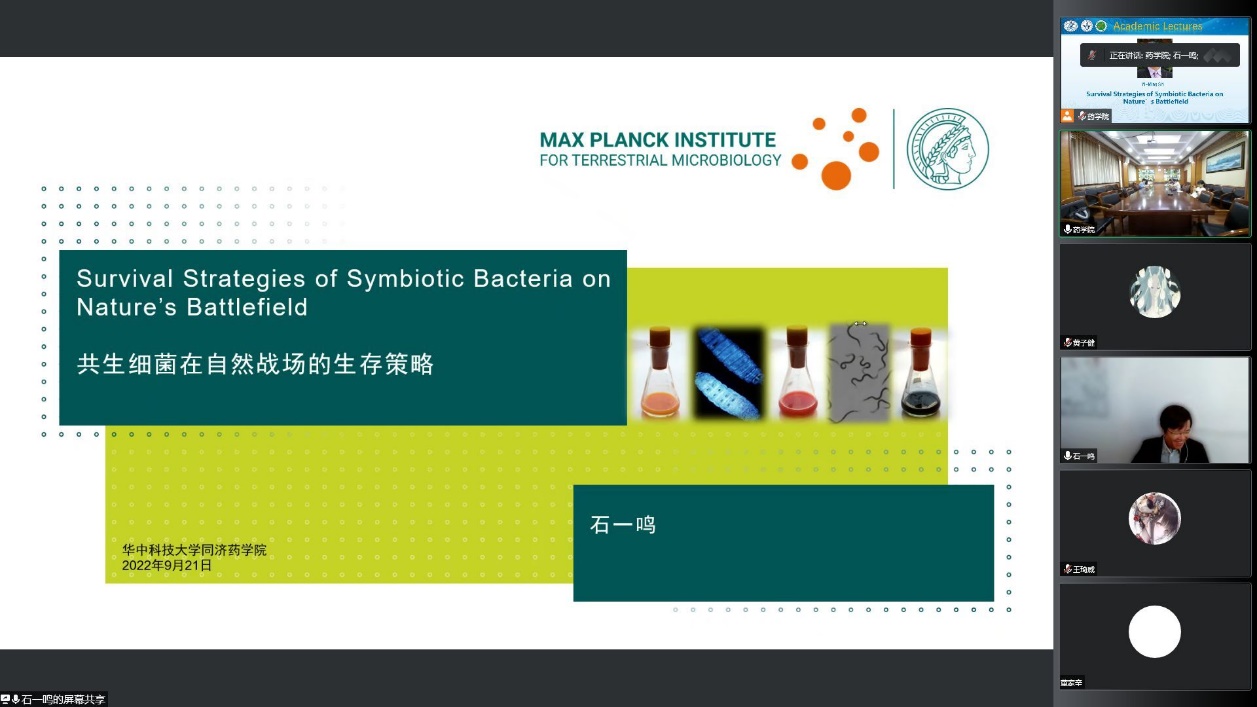On September 21, 2022, we were very pleased to invite a young talented expert on natural product research, Dr. Yi-Ming Shi, the project leader from Max Planck Institute for Terrestrial Microbiology, to give us an exciting and inspiring online academic lecture through Tencent meeting. The lecture was chaired by Professor Dr. Xiaofeng Cai. Teachers and graduate students from School of Pharmacy who work in the related area participated in the meeting either offline or online.

With the title of "Survival Strategies of Symbiotic Bacteria on Nature's Battlefield", Dr. Shi shared his recent progresses on exploration of the interaction between microorganisms and higher eukaryotes mediated by small molecules using various multi-disciplined strategies including genome mining, genetic engineering, structural elucidation and biological functional assays to guide drug discovery. In the lecture, he took photoxenobactins and benzoxazolinate as examples to introduce their research in detail: 1) Photoxenobactins derived from entomopathogenic bacteriaPhotorhabdus, which biosynthesis involves a unique hydrolysis release mechanism to make a series of photoxenobactins, allowing bacteria to take environmental metal ions for survival. Meanwhile, they also act as virulence factors, which can kill the insects for the growth of nematodes and bacteria. 2) Benzoxazolinate is a very active DNA-binding compound which natural origin is limited to a few types of microorganisms. Dr. Shi’s group identified a biosynthetic gene cluster responsible for the biosynthesis of benzobactins inXenorhabdusszenirmaiiDSM 16338, and found out that an independent phenazine biosynthetic gene was involved in the biosynthesis of benzoxazolinate, revealing an unexpected complex biosynthetic route. Additionally, this molecule also showed high cytotoxic activity against HepG2 cell.


At the end of the meeting, Dr. Shi proposed a very promising research on microbiome: human-microbe interaction. What is the correlation between microbial metabolites, human disease and health status, and how microbial metabolic small molecules affect humans? These questions are worthy of attention to all scientists working on microbial research and deserve much more investigations.



